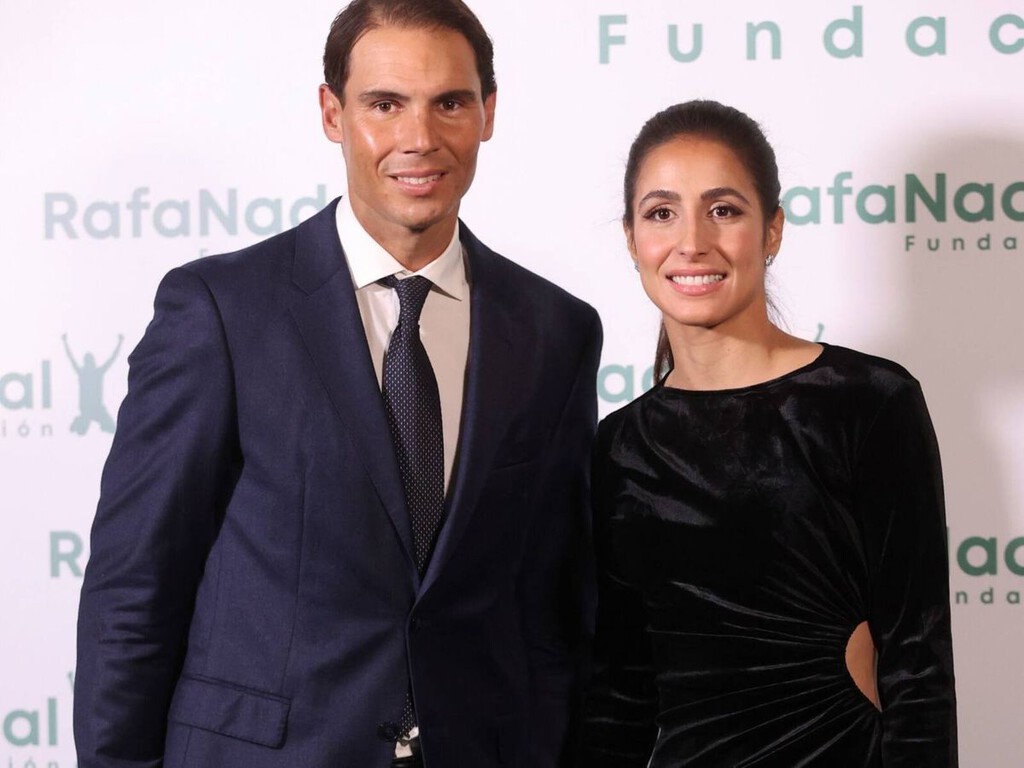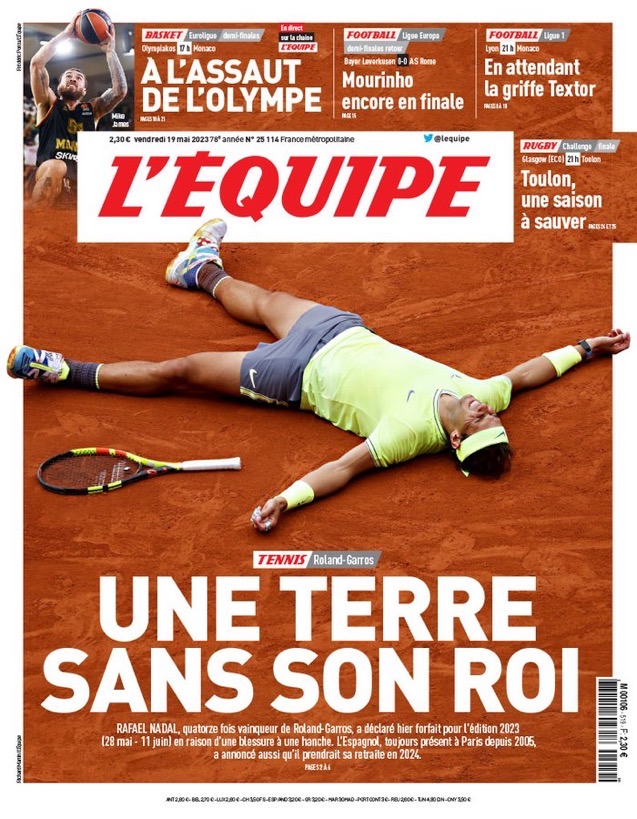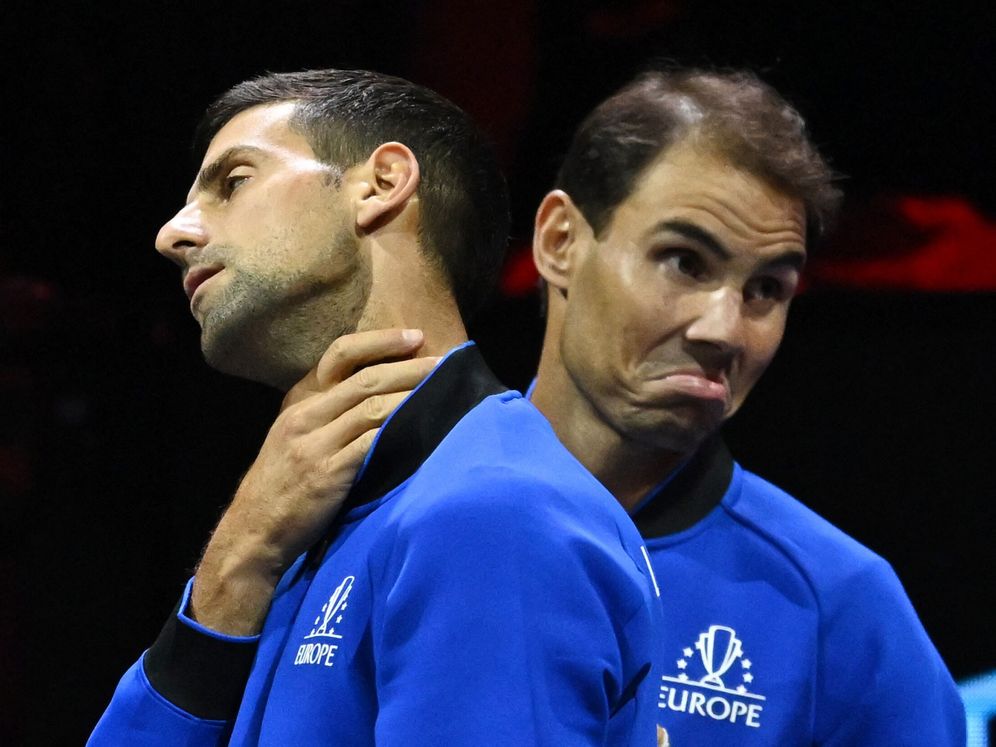Tennis has always had four unique venues: Melbourne, Paris, London and New York. That’s where the drama and glory is concentrated, and that’s where you have to be whenever you can. But this year we have to add a fifth element, a fifth stage: Manacor, a small town in the centre of the island of Mallorca. The whole world is following the battle of Rafael Nadal against his own body. A huge sporting drama. Also for Novak Djokovic, who needed a rival to win the race to be the most successful of all time.
There, in Manacor, Nadal made it clear on the afternoon of an already unforgettable 18 May 2023 that his story is coming to an end. Or perhaps it is already over. Although he has one last hope to get out of what could be seen as a self-deception: what he had been suffering since 18 January was not one injury, it was two injuries. The first one healed, but he will need much more time to forget about the second one and get back to training.
“The pain reappeared like a divine curse,” explained Vicente De la Varga, traumatologist and expert in orthopaedic surgery, in an interview with the Spanish radio station Cadena COPE.

The expert’s voice brought a good dose of clarity to an opaque issue: why, if Nadal was expected to return to play after six or eight weeks, after four months he announces that he is hanging up his racket indefinitely and that he is playing one last card, to return to the circuit in 2024 to say goodbye as he deserves?
The first injury, to the left psoas iliacus, was immediately detected by MRI and offered no problems: “The diagnosis of this type of injury is simple, as it is easily detected on the MRI as an intense oedema in the muscular part of the psoas iliacus tendon, which corresponds to the iliacus muscle. Rafa got better on time, but as soon as he tried to force a little, the pain returned. He stopped, continued the treatment and tried again.”
What on earth was going on? Dr. De la Varga explains: there was a second injury. Hidden and much more serious.
“The explanation is that the second way to injure the psoas iliacus tendon is through peritendinitis, a strain and partial rupture of the tendon portion corresponding to the psoas muscle. It is a much more difficult injury to detect on magnetic resonance imaging, and it is also usually masked, covered by oedema, the inflammation of the muscular part of the tendon, which is much more noticeable. Both injuries were there from the beginning. The muscle injury healed in its time frame, in six to eight weeks, but the injury to the tendon part was underestimated because the average healing time for psoas tendon injuries is 24 weeks, six months”.
So, for weeks, Nadal sought something that was unfeasible, to play Monte Carlo, Barcelona, Madrid, Rome and Roland Garros. He dreamed that the psoas would no longer bother him and he could concentrate on the feat of winning a 15th French Open title. A dream that would prove to be unfeasible.
“It was never going to happen, as he is still in the recovery period. Now it’s time to accept it and meet the deadlines. It’s an injury that will heal without any after-effects,” said De la Varga.
The shock in France is remarkable. If in 2005 and during some of the following years the relationship of the Philippe Chatrier with Nadal was complex, it has been years since the main tennis stadium on clay is devoted to the Spaniard. This is reflected in the editorial published by “L’Equipe” hours after the semi-retirement that shook the tectonic plates of tennis.

“Bearing in mind that Carlos Alcaraz was in nappies, that twitter didn’t exist and that Jacques Chirac was president of the French Republic, you don’t need to add any more to be convinced that the last time Roland Garros was held without the presence of Rafael Nadal, in 2004, none of us were anywhere near what we are today.”
“When will Nadal be available again? Four months in which he is trying to come back from an injury that he was promised would heal in half the time. Weeks in which he hits the ball almost every day without being able to sprint or glide, helpless witness to that rebellious psoas that taunts him. But to quit ten days before the start of the tournament is also to send a message of hope. He is already preparing for the future, without having to worry about the smartphones of emboldened trainees capturing on the fly the painful moments of shortened training sessions,” the world’s most influential sports daily acidly notes.
“To wisely turn his back on this edition of Roland-Garros is to avoid flying past the point of no return. He has never hidden it: his dream of playing until the 2024 Olympic Games, which will not only take place in Paris but also at Roland Garros, warms his heart and his body. At almost 37, Nadal has officially only taken one step back. He has not retired.”
Probably one of the most interested in a competitive Nadal in 2024 is Djokovic: the 22 Grand Slam titles tie, one of the most extraordinary stories the sport has ever produced, may cease to be such on Sunday 11 June in Paris. The Serb is aiming for Roland Garros, although his clay-court season has been poor and he is nervous, out of his usual groove. And, ambitious as he is, he would prefer that nobody tells him that his record came with Roger Federer and Nadal out of the race, with no chance of stopping him.
But if Roland Garros were to pass and 22-22 were to hold, if Wimbledon were to produce a different champion and if Alcaraz were to successfully defend his title in New York, January 2024 in Melbourne could become one of the defining moments in modern tennis history. Nadal hopes to be there, hopes that with rest and taking the pressure off his body, that second, hidden injury will fade away. He hopes to be a tennis player again and not to be afraid of anything or anyone. As always, as never, as maybe never again. To be continued?









